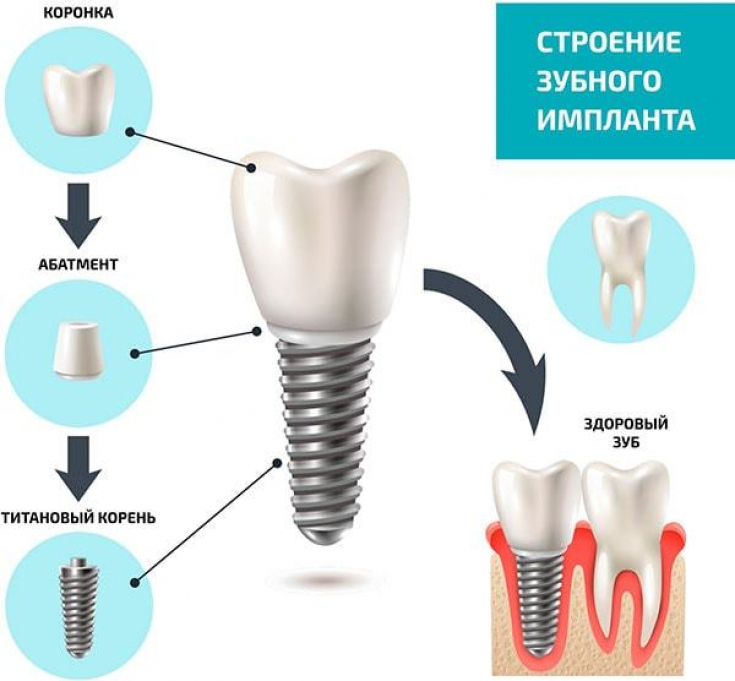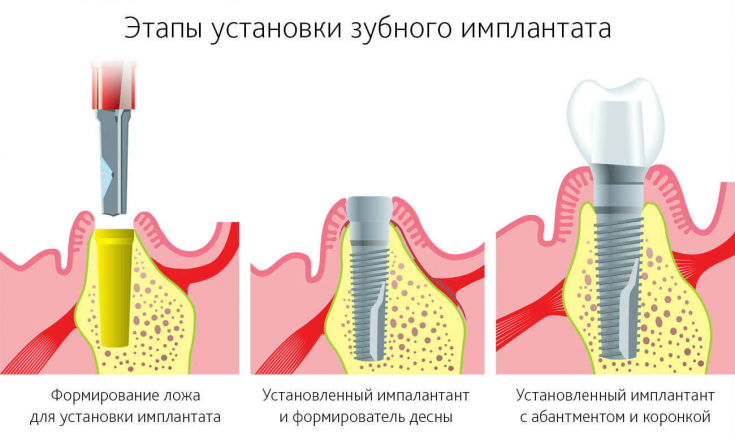Orthopedic treatment to replace lost teeth using endosseous implants is one of the most popular methods of interdisciplinary dental treatment today with permanent and temporary implant-supported prostheses. This requires careful planning and selection of patients for complex surgical and orthopedic interventions.
Read the article on estet-portal.com about how you can achieve relaxation of the masticatory muscles with botulinum toxin before installing an orthopedic structure and thus prevent the development of further complications.
Approaches to implant placement
A fairly large number of diseases are absolute or relative contraindications for the use of intraosseous implants. These include: type 2 diabetes mellitus, hormonal disorders, bone tissue damage, osteomalacia, oncological diseases.
Follow us on Instagram!
Relative contraindications are: bruxism, significant bone atrophy, inflammatory processes in the oral cavity and carious process of existing permanent teeth. Modern intraosseous implants are placed within the bone of the alveolar processes in a position close to the natural placement of the roots of the teeth, or in positions that provide an effective distribution of mechanical forces.
Effectiveness of intraosseous implants
The long-term positive outcome of such treatment depends on many factors, such as: the correct selection of patients for implantological and orthopedic treatment, the correct choice of implant design and surgical techniques for specific implantation sites, the regenerative capabilities of the patient and the achievement of proper primary and secondary implant stability.
Dental tissue engineering using stem cells
Primary stability depends on achieving mechanical fixation of the implants in the bone tissue. Secondary stability − these are primarily restorative and osseointegration processes of bone tissue, which depend on the structure of the bone, the type of implant and thread, the quality of the implant surface and the method of the procedure.
Direct loading of implants, i.e. placing an abutment with a crown a few days after implantation, can cause problems in patients with increased masticatory muscle tension.
Excessively high occlusal forces after the installation of orthopedic structures can complicate the process of bone tissue repair after the intervention and destabilize the correct position of the implant. During prosthetics, various types of orthopedic structures can be used, but most often the choice is determined (except for the extent of dental defects) by the quality and quantity of bone tissue, and the degree of preservation of permanent teeth, which border on a dental defect.
Bioceramics in maxillofacial surgery

Therefore, with the assistance of implant dentists, a study was conducted to evaluate the relaxation of masticatory muscles due to intramuscular injections of botulinum toxin type A into the masticatory muscles and anterior part of the temporal muscles, performed before the installation of an implant-supported prosthetic restoration.
Methodology of Botulinum Toxin Testing
During the study, each of the patients underwent an objective and subjective examination, an assessment of the functional state of the masticatory muscles. These studies were carried out twice − before the installation of implants (before the use of botulinum toxin) and 2 weeks after intramuscular injections of botulinum toxin. None of the patients required preparatory procedures such as autogenous bone grafting or bone replacement materials.
In a clinical study, no signs of functional disorders of the masticatory apparatus were revealed, but in all of them, excessive tension of the masticatory muscles and the anterior part of the temporal muscles was diagnosed relative to the physiological norm. Two weeks before the planned implantation, intramuscular injections of botulinum toxin type A were performed in the masticatory muscles and anterior part of the temporalis muscles.

When selecting patients for the study, contraindications to the use of botulinum toxin were excluded, namely: Lambert-Eaton syndrome, therapy with aminoglycosides, succinylcholine, tubocurarine, diseases of neuromuscular origin, miasthenia gravis, pregnancy and infectious diseases.
Results of a clinical trial of botulinum toxin injections
The results of a clinical study conducted before the use of the botulinum toxin preparation and 2 weeks after the injections indicate a significant reduction in the tension of the masticatory muscles and the anterior part of the temporal muscles. The use of botulinum toxin type A causes blocking of impulse conduction between the nerve and muscle cells due to the binding of botulinum toxin to the SNAP 25 protein complex, that is, by blocking the release of acetylcholine into the synaptic cleft. And also additionally due to binding to the nicotinic receptor.
Peculiarities of using different types of dental implants
Botulinum toxin is often used as an adjunct treatment in case of chronic bruxism, which results in pathological hypertrophy of masticatory muscles ("square face").
Botulinum toxin injections are widely used in the treatment of functional disorders of the masticatory apparatus, provide a period of about 15-17 weeks significant reduction in muscle tension.
Previous studies (M.Pihut) prove that a decrease in muscle tension, which was assessed using electromyography, indicates a 4-fold decrease in the electrical potentials of the muscles under study.

That is, botulinum toxin injections contribute to a significant reduction in occlusal forces, contribute to the creation of better conditions for bone tissue repair in the case of direct loading of implants, and in the case of two-stage implants − the installation of prostheses does not create a threat of excessive pressure due to the intense work of the muscles when using orthopedic structures with normal occlusal contacts.
Teeth whitening in dentistry: types of methods and their features
The use of botulinum toxin promotes the restoration of bone tissue and can be widely used in pre-implantation preparations, subject to appropriate selection of patients and the exclusion of contraindications to the use of botulinum toxin.
Eye Alignment Mouthpieces as a way to eliminate defects and maintain health









Add a comment